
* The Czechs have a long tradition of arms manufacture from the both pre-war days and the years of Communist rule. One of the important products built there during the reign of the Communists was a series of jet trainers built by the Aero Vodochody organization, starting with the "L-29 Delfin (Dolphin)" and then the improved "L-39 Albatros".
These two aircraft were among the most heavily produced jet trainers ever built. The Albatros is regarded as an excellent aircraft with a relatively low pricetag for its capability. Aero Vodochody has now extended the basic L-39 design with Western gear as the "L-159" light attack aircraft in hopes of continuing its success into the 21st century. This document provides a history and description of the Delfin and Albatros. A list of illustration credits is included at the end.
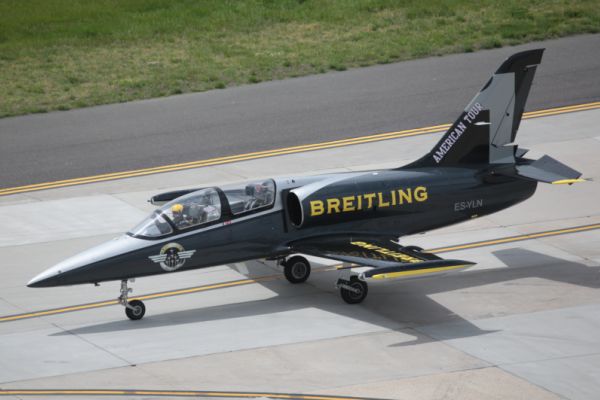
* The Aero Vodochody organization of Czechoslovakia was involved with the license production of Soviet jet designs in the early 1950s. In the later part of the decade, the organization began design work on a tandem-seat jet trainer, which emerged as the "L-29 Delfin".
The Delfin was designed by a team under Z. Rublic and K. Thomas, and the "XL-29" prototype performed its maiden flight on 5 April 1959, powered by a British Bristol Viper turbojet. The project had of course been implemented with Soviet blessing and knowledge, and in 1960 the Soviets announced a competitive fly-off between the Delfin, the Polish PZL-Mielec TS-11 Iskra, and the Yakovlev Yak-30, with the winner to become the standard trainer for the USSR and its allies.
A second Delfin prototype flew in July 1960, this aircraft being fitted with the production-fit Czech-built Motorlet M-701 turbojet, and was followed in 1961 by a pre-production prototype that was evaluated in the trainer competition in that year. The Delfin was declared the winner, ensuring that it would have a long and heavy production run. The type first entered operational service in 1963. NATO gave the Delfin the reporting name of "Maya".
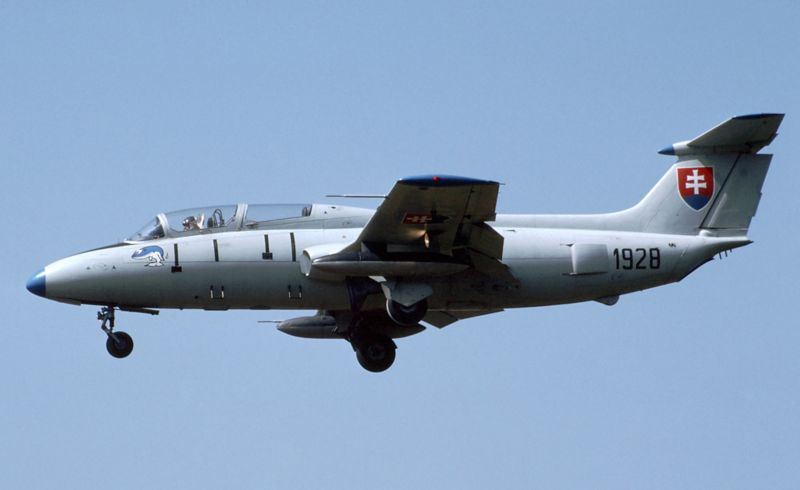
* The L-29 was a simple and conservative design, some might say too conservative, with a mid-mounted straight wing and engine intakes in the wing roots, a tee tail, and a tandem cockpit with separate canopies hinging open to the right. The back seat was only stepped up by about 15 centimeters (6 inches), giving the back-seat instructor a poor forward view.
The tricycle landing gear, with single wheels on all three legs, was designed for rough-field operation. The main gear hinged in the wings and retracted towards the fuselage, giving a wide and stable ground track. The aircraft was powered by a Motorlet M-701c-500 turbojet with 8.73 kN (890 kgp / 1,960 lbf) thrust. "Swiss cheese" perforated airbrakes were fitted on either side of the rear fuselage. The L-29 could be fitted with a "wet" stores pylon under each wing, allowing the type to carry bombs, rocket pods, or gun pods for armament training, or two 150-liter (40 US gallon) external tanks. A gunsight and gun camera could be fitted for gunnery training.
___________________________________________________________________
AERO VODOCHODY L-29 DELFIN:
___________________________________________________________________
wingspan:
10.29 meters (33 feet 9 inches)
wing area:
19.85 sq_meters (213.55 sq_feet)
length:
10.81 meters (35 feet 6 inches)
height:
3.13 meters (10 feet 3 inches)
empty weight:
2,280 kilograms (5,027 pounds)
loaded weight:
3,540 kilograms (7,805 pounds)
max speed at altitude:
655 KPH (407 MPH / 355 KT)
service ceiling:
11,000 meters (36,100 feet)
take-off run:
550 meters (1,805 feet)
range with drop tanks:
895 kilometers (555 MI / 485 NMI)
___________________________________________________________________
Small numbers of a single-seat "L-29A Akrobat" aerobatic performance variant were built, with the first flying in 1967. A prototype was also built of an "L-29R" light attack variant, but since the Delfin's warload was minimal, the idea went no further.
* The Delfin remained in production until 1974, with 3,665 delivered, making it one of the most heavily-produced jet trainers in history. The USSR acquired over 2,000 of these aircraft, with most of the rest going to other Warsaw Pact countries, including Bulgaria, Czechoslovakia, East Germany, Hungary, and Romania. The Poles did not acquire the L-29, preferring instead to stay with their locally-built PZL TS-11 Iskra.
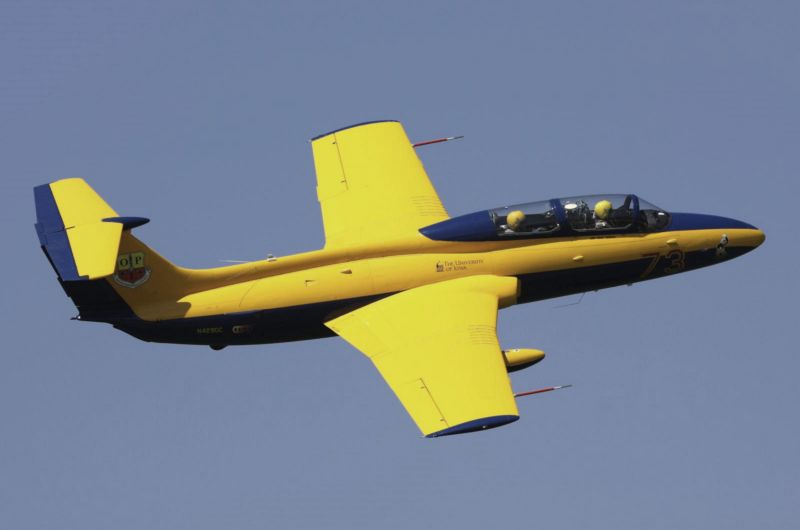
Production quantity was really the Delfin's only major distinction. It could not be called a "bad" aircraft, but it certainly was an uninspiring one, with a low power-to-weight ratio, modest performance, and arguably nothing much in the way of looks. In all fairness, however, its handling was docile -- generally a good characteristic in a primary or intermediate trainer -- and the main selection criteria was reliability and maintainability. In short, it met its specifications well. It was certainly superior to the aircraft that it replaced, the MiG-15UTI, which had some handling quirks. The Delfin was still otherwise uncompetitive with contemporary trainers, and only about 200 of the huge production total were ever delivered outside of the Eastern Bloc.
BACK_TO_TOP* The L-39 Albatros was designed by an Aero Vodochody team under Jan Vlcek as a successor for the Delfin for use for flight training by the USSR and Warsaw Pact countries, as well as Soviet allies elsewhere. Although there was no official requirement for the design, there was substantial interest from the Czechoslovak and Soviet air forces for the new trainer on its merits, allowing development to go forward.
Two initial prototypes were built, the first being for static testing, and the second performing its maiden flight on 4 November 1968. Following successful flight trials, five more prototypes were built, again with one reserved for static testing. Ten pre-production aircraft were delivered beginning in 1971. These were similar to the prototypes, but had bigger air intakes and slightly longer air intake trunks. Production was initiated in 1972, with service trials the following year and volume deliveries beginning in 1974. Oddly, it doesn't appear the Albatros was ever given a NATO reporting name.
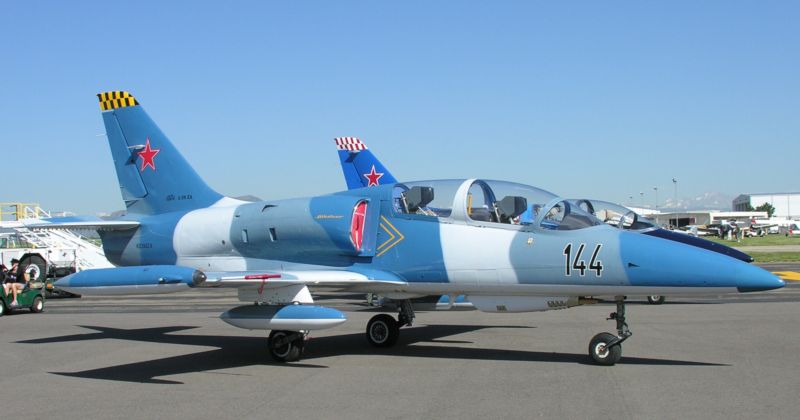
* The Albatros was a low-wing aircraft with tandem seating, powered by a Soviet-built Progress AI-25TL turbofan with 16.87 kN (1,720 kgp / 3,790 lbf) thrust. This engine was originally designed for the Yak-40 small jetliner, being modified by the Czech Motorlet organization for the L-39. The engine air intakes were set high behind the cockpit, reducing the chance of foreign-object ingestion and keeping them out of airflow disruptions from the wings. The Albatros also had a French-made auxiliary power unit (APU) turbine for self-starting.
The Albatros was a much more pleasing aircraft than the Delfin, with sporty looks. The wings had a modest leading-edge sweepback of about 6.5 degrees, and a shallow dihedral of 2.5 degrees. The wing was fitted with double slotted flaps to reduce take-off roll. The tailplane had a greater sweepback; the tailfin was sharply swept back.
Fixed fuel tanks were mounted on the wingtips. They were designed to improve flight efficiency by reducing wingtip vortex drag, and incorporated landing and navigation lights. As with the Delfin, the landing gear had a wide track and was designed for operation from rough airstrips.
The L-39 was simple to fly and maintain. For example, the rear fuselage was only held on by five bolts, allowing it to be quickly pulled off for access to the engine. The aircraft also featured a large number of access panels, and most maintenance could be conducted without the use of ladders or external platforms.
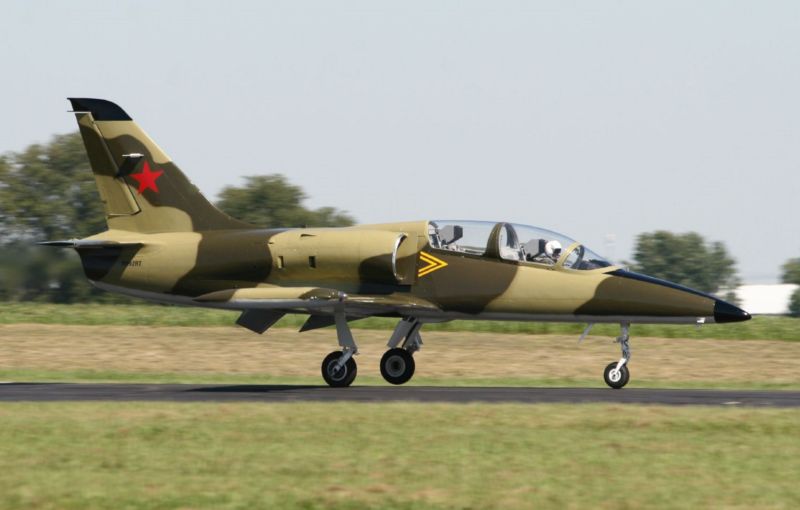
The cockpit had twin canopies, both canopies opening to the right. The two seats were separated by an internal windscreen. The L-39 improved on the Delfin by giving the back seat a reasonable step-up, improving the back-seater's view forward. The cockpit was pressurized and climate-conditioned. Czech-designed VS-1 rocket ejection seats were fitted, which could be used at zero altitude, but required a minimum speed of about 150 KPH (93 MPH).
___________________________________________________________________
AERO VODOCHODY L-39ZA ALBATROS:
___________________________________________________________________
wingspan:
9.46 meters (31 feet)
wing area:
18.80 sq_meters (202.37 sq_feet)
length:
12.13 meters (39 feet 9 inches)
height:
4.77 meters (15 feet 8 inches)
empty weight:
3,400 kilograms (7,500 pounds)
loaded weight:
5,650 kilograms (12,460 pounds)
max speed at altitude:
750 KPH (465 MPH / 405 KT)
service ceiling:
11,000 meters (36,000 feet)
range, no drop tanks:
1,350 kilometers (840 MI / 730 NMI)
___________________________________________________________________
* Several different L-39 variants were produced:
Over 2,925 L-39s were built, with deliveries to:
Different sources give slightly different numbers of aircraft, and there were many transfers between users. In particular, with the breakup of the Soviet Union, the L-39s operated by the Red Air Force were distributed among the new nations that had previously made up the USSR. About 935 were retained by Russia, 440 were kept by Ukraine, and smaller numbers were obtained by the various new republics.
One of the more amusing of these "redistributions" was the fate of seven Libyan L-39ZOs captured by the French in Chad. These aircraft ended up being sold to private buyers, with six going to the US and one going to the UK. In fact, with a number of surplus L-39s on the market, they are proving a popular type with private fliers who can afford a snappy little refurbished jet aircraft at about a half million USD.
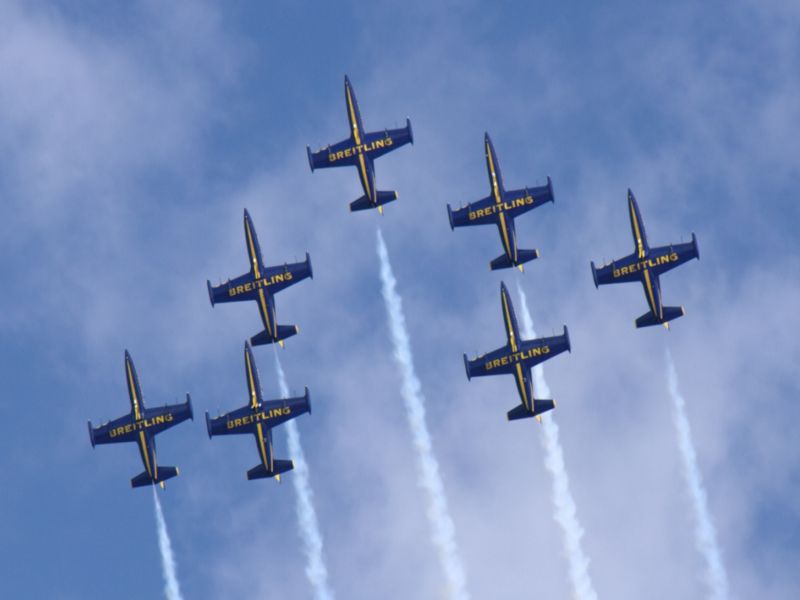
Due to the L-39's excellent handling characteristics and agility it has also proven a useful mount for aerobatic demonstration teams, including one from the Vyazma Air Academy in Russia, and the Czechoslovak "Biele Albatrosy / White Albatrosses". The Biele Albatrosy came under Slovak control after the partition of Czechoslovakia. There are a number of civilian L-39 flight demonstration teams, including the Breitling Jet Team in Europe and the Patriots team in the USA.
BACK_TO_TOP* In the 1980s, Aero Vodochody began work on a substantially improved version of the L-39 under the designation "L-39M", where the "M" stood for "Modernized". This particular design was never built, since the organization decided to move a step further beyond it with the "L-39MS", where "MS" unsurprisingly stood for "Modernized Super".
The L-39MS was introduced with the name of "Super Albatros". Only six were built for the Czechoslovak Air Force; a larger buy was disrupted by the partition of the country. 49 were sold to Egypt as "L-59Es" and 12 were sold to Tunisia as "L-59Ts". The Tunisian aircraft were given the local name of "Fennec", after the big-eared little fox of the desert.
The Super Albatros was derived from the L-39ZA and looked much like it, but featured:
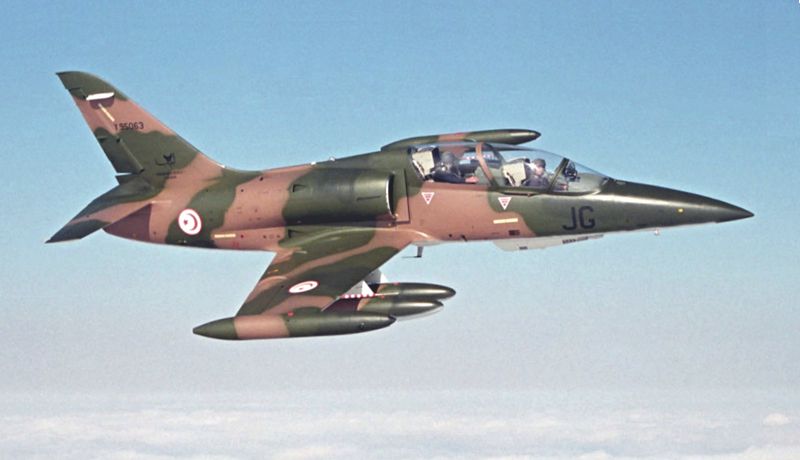
Initial flight of the L-59 was on 30 September 1986, with two more prototypes flying in 1987. Initial flight of the first production version was on 1 October 1989.
___________________________________________________________________
AERO VODOCHODY SUPER ALBATROS:
___________________________________________________________________
wingspan:
9.54 meters (31 feet 4 inches)
wing area:
18.80 sq_meters (202.37 sq_feet)
length:
12.20 meters (40 feet)
height:
4.77 meters (15 feet 8 inches)
empty weight:
4,030 kilograms (8,890 pounds)
loaded weight:
7,000 kilograms (15,435 pounds)
max speed at altitude:
870 KPH (540 MPH / 470 KT)
service ceiling:
12,200 meters (40,000 feet)
range, no drop tanks:
1,570 kilometers (975 MI / 850 NMI)
___________________________________________________________________
The L-39 and L-59 have been used in a military role of sorts in the US, having been acquired by an American firm named "Air USA" to fly as an "aggressor" in military training exercises -- Air USA machines being notably used as air-to-ground attack trainers. At last count, the company had almost a dozen L-39s and L-59s, along with other types of aircraft.
BACK_TO_TOP* In the 1990s, following the fall of the Iron Curtain, Aero Vodochody decided to revise the L-39 to keep it up to date and obtain sales from new markets.
The "L-139" was a further updated Super Albatros, with an Allied Signal / Garrett TFE731 turbofan engine providing 18.15 kN (1,850 kgp / 4,080 lbf) thrust, and Westernized digital systems, including a Flight Visions head-up display (HUD) and Bendix-King avionics. Initial flight was on 9 May 1993.
___________________________________________________________________
AERO VODOCHODY L-139 ALBATROS:
___________________________________________________________________
wingspan:
9.46 meters (31 feet)
wing area:
18.80 sq_meters (202.37 sq_feet)
length:
12.13 meters (39 feet 4 inches)
height:
4.77 meters (15 feet 8 inches)
empty weight:
3,460 kilograms (7,630 pounds)
loaded weight:
6,000 kilograms (13,230 pounds)
max speed at altitude:
760 KPH (470 MPH / 410 KT)
service ceiling:
12,200 meters (40,000 feet)
range, no drop tanks:
1,650 kilometers (1,025 MI / 890 NMI)
___________________________________________________________________
The L-139 never reached production status. The TFE731 engine was in some ways a step backward from the Progress DV-2 of the Super Albatros: although the Western turbofan was more fuel-economical, lighter, and in principle more reliable, it also produced significantly less thrust, making the L-139 relatively underpowered.
The L-139 did provide a basis for an improved derivative, the "L-159 Advanced Light Combat Aircraft (ALCA)", which was primarily a light attack aircraft that could also be used as a lead-in trainer. It was substantially more optimized for combat than other members of the Albatros family, with cockpit armor protection, plus a centerline stores pylon and three stores pylons under each wing, for a total of seven. It was qualified with a variety of weapons, including Sidewinder, Maverick, and Brimstone missiles, as well as unguided rockets, bombs, and electronic countermeasures or reconnaissance pods.
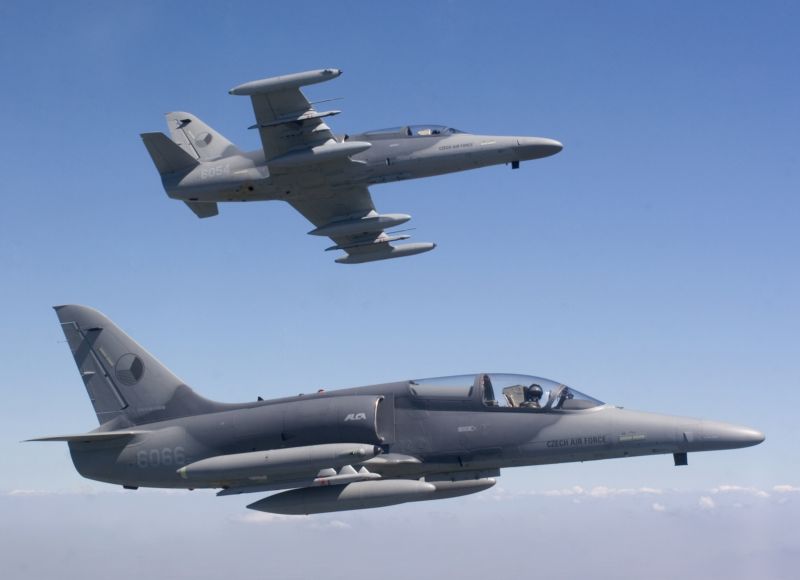
The "standard" cannon pod was the ZPL-20 Plamen 20-millimeter gun pod, but there was consideration of alternatives. Other stores, such as beyond-visual-range AIM-120 AMRAAM missiles, were considered. The L-159 was powered by an Allied Signal / ITEC F124-GA-100 turbofan engine with dual redundant "full authority digital controls (FADEC)" and 28.0 kN (2,860 kgp / 6,300 lbf) thrust. Larger intakes were designed to accommodate the new engine, which was about twice as powerful as the L-39's original AI-25TL engine.
The aircraft was fitted with modernized cockpit instrumentation and controls conforming to Western standards, making it a suitable combat aircraft for Eastern European nations trying to mesh their military services with NATO. Features included:
The L-159 also included a digital "Aircraft Monitoring System (AMOS)" to log the health of the aircraft in flight for readout by service crews on the ground.
There were two versions: a single-seat "L-159A", and a two-seat "L-159B" for training and operational conversion. Interestingly, both had the same tandem clamshell canopy. In the L-159A, the back seat area was occupied a fuel tank and combat avionics, hidden under a cover. In the L-159B, the back-seater had flight controls and a control panel that largely duplicated that of the front seat, including a HUD repeater panel.
___________________________________________________________________
AERO VODOCHODY L-159A ALCA:
___________________________________________________________________
wingspan:
9.54 meters (31 feet 4 inches)
wing area:
18.80 sq_meters (202.37 sq_feet)
length:
12.72 meters (41 feet 9 inches)
height:
4.77 meters (15 feet 8 inches)
empty weight:
4,160 kilograms (9,150 pounds)
loaded weight:
8,000 kilograms (17,640 pounds)
max speed at altitude:
910 KPH (565 MPH / 490 KT)
service ceiling:
13,200 meters (43,300 feet)
range, no drop tanks:
1,570 kilometers (975 MI / 850 NMI)
___________________________________________________________________
The project was initiated in 1992 following discussions with the Czech air force, leading to formal specifications in 1993. Rollout of the L-159A prototype was on 12 June 1997, and initial flight followed on 2 August, with Aero Vodochody chief test pilot Miroslaw Schutzer at the controls. The first full-specification prototype flew on 18 August 1998, with initial deliveries in late 1999.
In 1997, the Czech government ordered 72 L-159s, originally to be initially delivered in 1999 with following deliveries over the next three years, though the first delivery date slipped to 2000. Due to funding problems, only 24 were delivered up to 2003. Four single-seaters that had been produced but not delivered were rebuilt into two-seat trainers and accepted by the Czech air force in 2007, with these machines designated "L-159T1". 16 of the Czech AF L-159s were upgraded, with an airframe overhaul and modest updates in kit, with the upgrade completed in 2023.
The first foreign buyer was Iraq, ordering 12 single-seat and 3 two-seat L-159s from 2012, with deliveries from 2015 to 2018; one new machine was built to fulfill the order. From 2016, the Iraqi L-159s participated in the air offense against Islamic State insurgents occupying western Iraq. Seven were also sold to Draken International, an American provider of air services for military training, with deliveries in 2016. Draken has since obtained more, to a total of 21. Aero Vodochody formed a partnership with Draken to promote and support the L-159.
The Czech air force ordered three "L-159T2" machines in 2016, these machines featuring fuselage modifications, plus modernized avionics; deliveries were in 2018. In 2018 Aero Vodochody announced work on an "L-259" light attack aircraft, to be developed in collaboration with Israel Aircraft Industries. The L-259 was to have a "wet" wing, an optional inflight refueling probe, seven stores attachments, and a combat avionics suite tailored to customer request. Nothing more has been said about it.
* In late 2013, Aero Vodochody announced development of an L-159 derivative, the "L-169", with more fuel storage and avionics updates, many obtained from Czech industry. However, there wasn't much interest, and so Aero Vodochody took a step back, announcing in 2014 they would re-launch L-39 production, updating the type to the "L-39NG (New Generation)". As introduced, features included:
Thanks to the composites, lighter engine, and lighter avionics, the L-39NG was about 350 kilograms (770 pounds) lighter than the L-39C. A demonstrator, an L-39 refitted with the FJ44 engine and the new avionics, performed its initial flight on 14 September 2015, this machine being designated "L-39CW". The L-39CW is on offer for upgrades of existing machines, as the "L-39NG Phase 1".
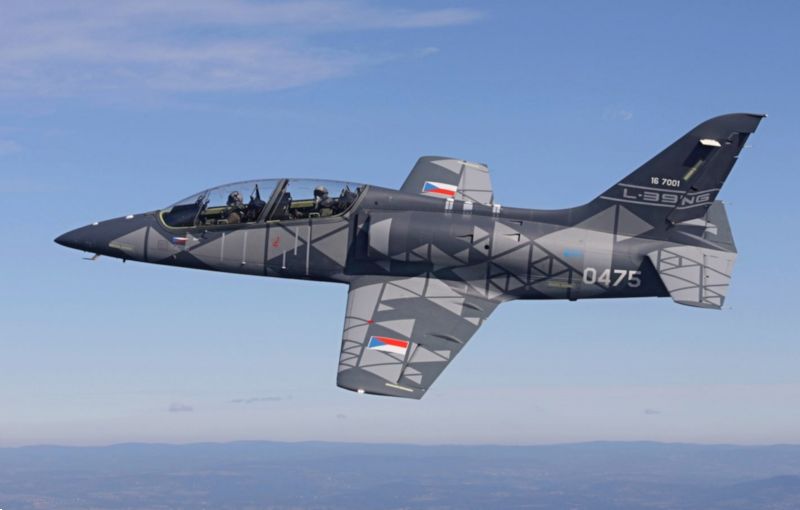
That was followed by the "L-39NG Phase 2", with the new wing and fuselage, the first machine performing its initial flight in late 2018. Two static-test airframes and a pre-production machine were also built, with the type receiving certification in 2019. In 2021, Vietnam ordered twelve L-39NGs in a light attack configuration, the type having five stores hardpoints -- one on the centerline, two on each wing -- and an external stores load of up to 1,600 kilograms (2,525 pounds). The light attack configuration also had cockpit armor and defensive countermeasures systems. The Vietnamese machines had Russian avionics, though Western avionics is on offer as well.
Draken International already flew the L-39; the company signed a "letter of intent" with Aero Vodochody in 2015 to upgrade six of them to L-39NG specification. Breitling similarly ordered the L-39NG update for its Albatros air demonstration team in 2018.
Senegal placed an order for four attack machines, but the deal fell through on financing. Ghana placed an order for six in 2021. Hungary ordered 12 in 2022, including eight trainers and four reconnaissance-configured machines. The Czech Air Force ordered four trainers in 2022.
BACK_TO_TOP* There were a number of unbuilt Albatros variants:
* As a personal footnote, I ran into an L-39 demonstration pilot on the flightline at an airshow in Denver in 2007, and asked him: "Is this thing as much fun to fly as it looks?"
He grinned and replied: "It's even more fun than THAT!" What a kick-ass little rocket ship!
* Sources include:
This document began life as notes taken from datafiles obtained from the German FLUG REVUE website.
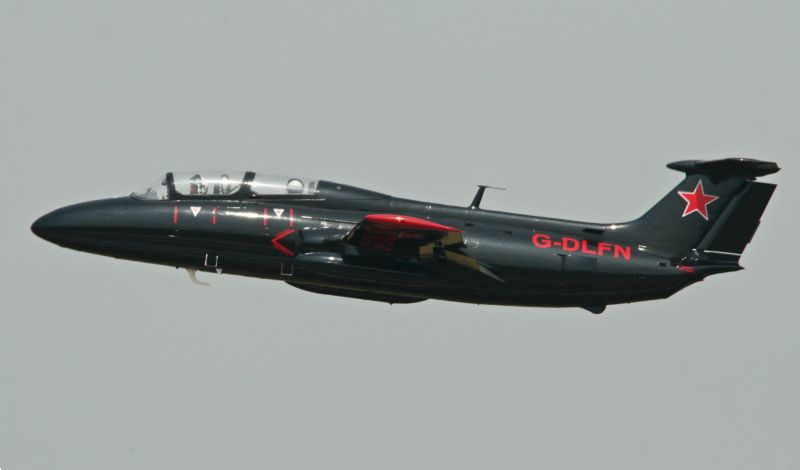
* Revision history:
v1.0.0 / 01 dec 01 v1.0.1 / 01 dec 03 / Review & polish. v1.0.2 / 01 dec 05 / Review & polish. v1.0.3 / 01 may 07 / Review & polish. v1.0.4 / 01 apr 09 / Review & polish. v1.0.5 / 01 mar 11 / Review & polish. v1.0.6 / 01 feb 13 / Iraqi L-159 buy, Patriots demo team. v1.0.7 / 01 jan 15 / L-39NG. v1.0.8 / 01 dec 16 / Review & polish. v1.1.0 / 01 nov 18 / Review, update, & polish. v1.1.1 / 01 sep 20 / Review, update, & polish. v1.2.0 / 01 jul 22 / Illustrations update. v1.2.1 / 01 jun 22 / Review & polish. (++)BACK_TO_TOP
